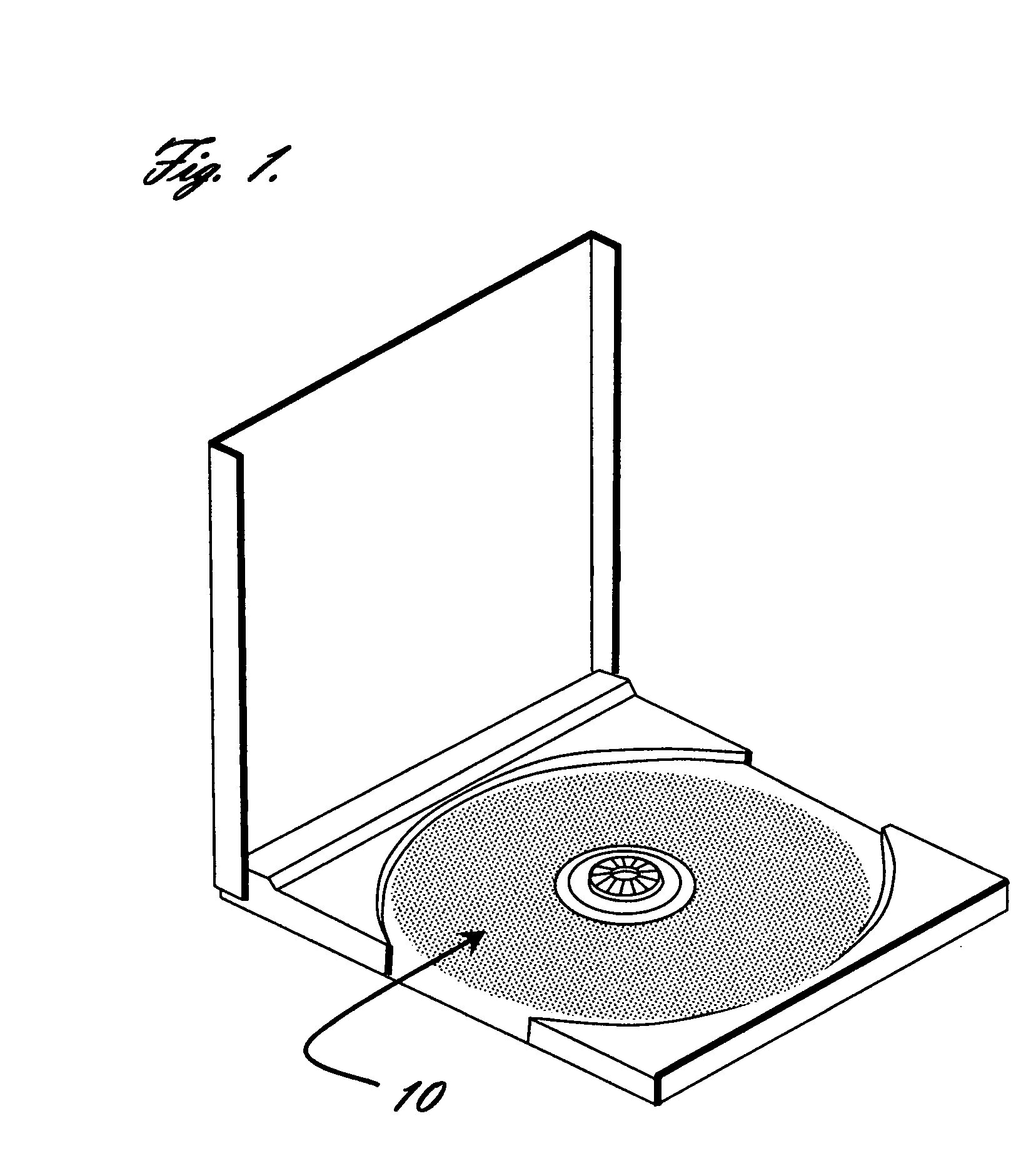Disc protector
a technology for optical data storage and discs, applied in the direction of record carrier construction details, containers, packaging goods, etc., can solve the problems of degrading the transparent surface layer which covers, affecting the appearance of obscuring the surface texture to the original high-polished surface, so as to avoid the possibility of disc reading devices and no additional complexity in disc handling.
- Summary
- Abstract
- Description
- Claims
- Application Information
AI Technical Summary
Benefits of technology
Problems solved by technology
Method used
Image
Examples
Embodiment Construction
[0018]FIG. 1 shows the essence of the new invention where a protective layer 10 is introduced into the base of the disc holder.
[0019]FIG. 2 shows the general arrangement for disc storage cases where the disc 20 installs into the base 30, consisting of an integrally formed central hub 40, and a formed recess 50, the case then be closed with the hinged lid 60.
[0020]FIG. 3 shows a disc installed in the disc holder, with the hinged lid in the open position, to reveal section A-A which is used to provide further detailed description of the invention.
[0021]FIG. 4 shows the section at A-A for a disc that is located in conventional disc holder. The disc 20 is shown mounted on the central hub 40 in view B, further the disc 20 is shown to comprise of three layers, a backing layer 70, a central data containing layer 80 and an optically transparent protective layer 90. Typical dimensions of the discs 20 are 120 mm in diameter, a central spindle hole diameter of 15 mm and a thickness of 1.2 mm. ...
PUM
| Property | Measurement | Unit |
|---|---|---|
| inner diameter | aaaaa | aaaaa |
| outer diameter | aaaaa | aaaaa |
| thickness | aaaaa | aaaaa |
Abstract
Description
Claims
Application Information
 Login to View More
Login to View More - R&D
- Intellectual Property
- Life Sciences
- Materials
- Tech Scout
- Unparalleled Data Quality
- Higher Quality Content
- 60% Fewer Hallucinations
Browse by: Latest US Patents, China's latest patents, Technical Efficacy Thesaurus, Application Domain, Technology Topic, Popular Technical Reports.
© 2025 PatSnap. All rights reserved.Legal|Privacy policy|Modern Slavery Act Transparency Statement|Sitemap|About US| Contact US: help@patsnap.com



